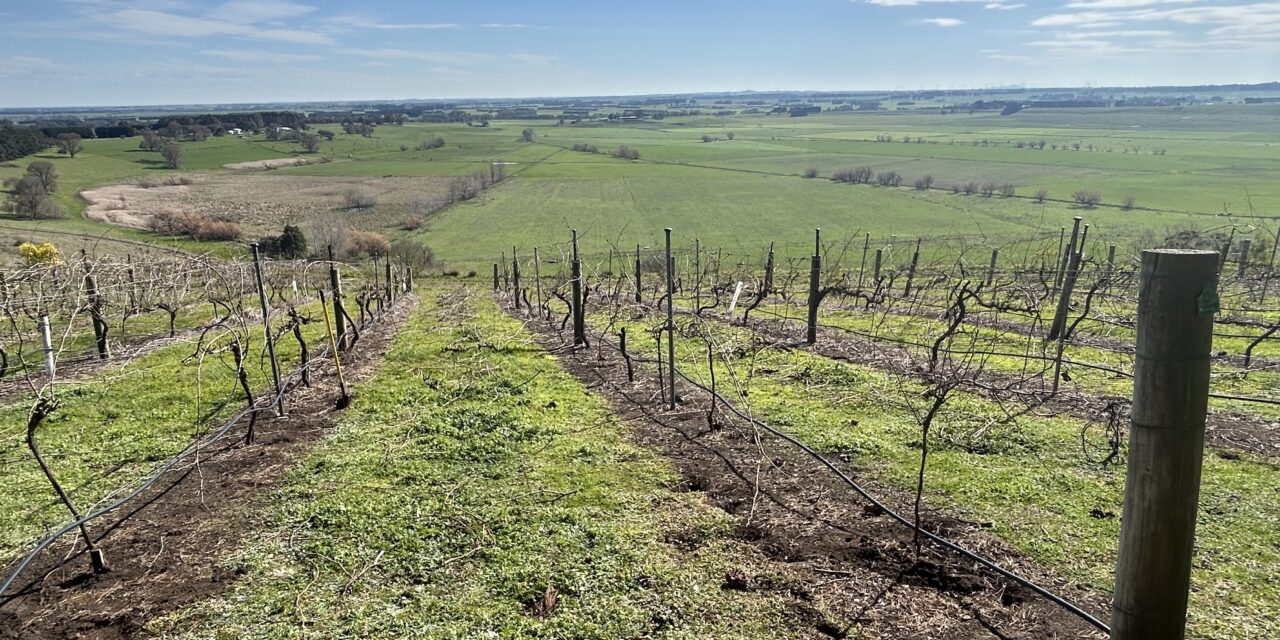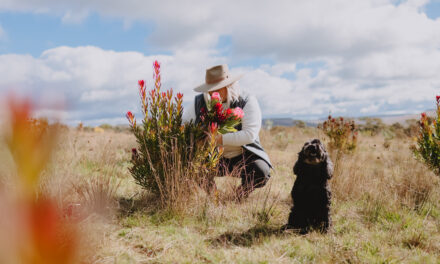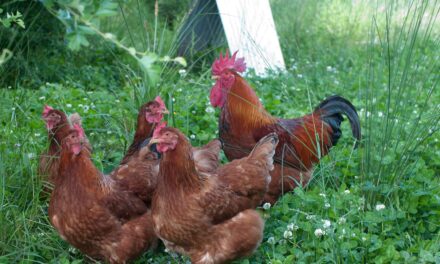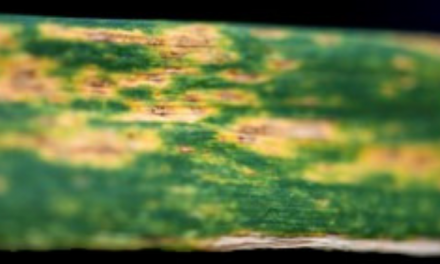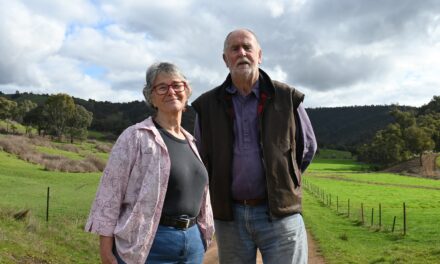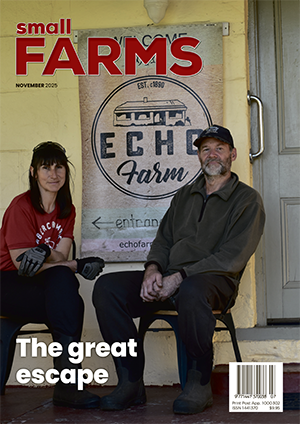A south-west Victorian dairy farming couple’s decision to plant grape vines came down purely to aesthetics. As RICK BAYNE discovered, it turned out to be a shrewd commercial investment.
Barry and Bernadette Wurlod thought a few grape vines might look good when they were landscaping around their new home on the edge of a dormant volcanic crater near Terang.
More than a decade later, their tentative venture into grape growing has morphed into a flourishing business.
After leasing their former dairy farm at Dixie in south-west Victoria in 2005, Barry and Bernadette retained a bit of land to take advantage of the views and just in case they wanted to do something different.
Their decision to leave dairy in 2005 didn’t mean leaving the land they love that has been in Barry’s family since 1963 and is now home to four generations aged from two to 94.
Inspired by what they saw during a trip to Europe, Bernadette thought it would be nice to have their own grape vines.
“It was for no other reason than I thought they would look nice,” she said.
“We landscaped the gardens and put the grapevines in.”
After about 12 years of tinkering with growing grapes and making wines, they started producing wine commercially in 2019, creating Keayang Maar.
Barry admits their first attempts at winemaking weren’t great, but through trial and error and planting more vines, they eventually found the right blends.
In 2019, their son Jerram and daughter-in-law Caitlin returned home to help them take the next step of producing their wine commercially and opening the cellar door.
Jerram had plans of become a film director and got as far as the art department on Neighbours and Caitlin was working in corporate agriculture.
They met in Melbourne but, having both grown up in the country, they were keen to bring their children up in a rural setting.
Their decision to start looking for new opportunities coincided with Barry and Bernadette turning their hobby into a cellar door.
“We asked if they wanted any help with events and functions and after we got talking, we decided to join them,” Jerram said.
After initially leasing the farm, the family sold about two thirds of the property two years ago while keeping the maar flats to lease for dairy cow grazing and enough land for the growing vineyard business.
At the moment they have 2.5 hectares (six acres) of vines, but there are plans for an additional 1.6 hectares (four acres) to supply enough product for the cellar door and Victoria-wide wholesale.
After making wine out of their garage for about 10 years, Barry and Bernadette designed a new winemaking facility which overlooks the crater and features a tasting room, climate-controlled cellar, winemaking facilities and function centre.
Barry is a self-taught winemaker and shared his knowledge with Jerram and Caitlin, who also turned to experienced wineries and consultants when it became a commercial operation.
“Luckily, because I had so many good mentors, I’ve been able to come up to speed fairly quickly and now I’m quite obsessed,” Jerram said.
“Wine is an incredibly honest and pure product. We’re conditioned to think everything is processed, but wine is a product of its environment. It’s 99.9 per cent fermented grape juice — anything you add is already naturally present in the wine.
“I enjoy other alcohol products like beer and whisky, but they follow a recipe and include ingredients to create their flavours, whereas the flavour you get from any wine is coming straight from the grape itself.”
And that’s where Keayang Maar thrives.
“We’re on the side of the Keayang Maar volcanic crater and part of the third largest volcanic region in the world, which is dormant now but due to be active again in about 30,000 years,” Jerram said.
The property was once part of Keayang Estate, established by the first European settlers. The name Keayang comes from the Kirrae Whurrong Indigenous language and is believed to mean eel. Eels can still be found in the crater’s drains and adjacent Mt Emu Creek.
“It’s important for us to name the winery and vineyard after the location because it pertains to the flavour and quality of our wine,” Jerram said.
The vineyard is set on a dark aerated topsoil deposited on the banks as the crater lake dried. It’s very nutritious soil and easy for roots to penetrate, but below that topsoil is what Jerram describes as “the real secret to the success of our vines”: a volcanic ash gravel called tuff.
“A lot of farmers use it for tracks for cows, but the cows are walking over gold for any fruit trees,” Jerram said.
“The mineral and draining qualities are really good and you can also use it as an above-ground mulch, so we are trialling that. That will make the vines produce more and better-quality fruit.”
The site is fortunate to receive high rainfall, although it can be a drawback.
“This elevated position and the tuff gravel are the keys to our success,” Jerram said.
“We have to do very little irrigation to keep the vines happy, but one of the drawbacks is that they can become very vigorous, so we do more work on canopy maintenance than you would need in drier parts of the country.”
It takes about five years for vines to become productive and they can live for more than 100 years, depending on location.
Keayang Maar’s oldest vines are only 20 years old, so they have a bright future, making Shiraz and pinot noir, riesling, chardonnay and viognier, based on the cool climate region of Burgundy in France.
Jerram predicts more people will turn to winemaking in the region, and he welcomes the trend.
“We’d prefer to have more wineries close by to attract people to buy wine,” he said.
“At the moment people come to visit the 12 Apostles and more wineries could give them more reason to stay instead of being just a day trip.”
The cellar door promotes the region, with everything on the grazing board made within 50km, including cheese, pastes, cured meats and crackers.
Keayang Maar is developing plans for on-site accommodation and will expand its wholesale market and ramp up functions.
“You need all those elements to make things work long-term,” Jerram said.
The business started making 4000 to 6000 bottles a year but quickly sold out. It’s now producing between 10,000 and 12,000 bottles annually.
It has also introduced a bottle recycling program, reusing 3000 bottles last year and about 10,000 bottles since opening in 2020.
Barry and Bernadette are still fully involved as business owners, Jerram and Caitlin are partners and they have a part-time employee.

